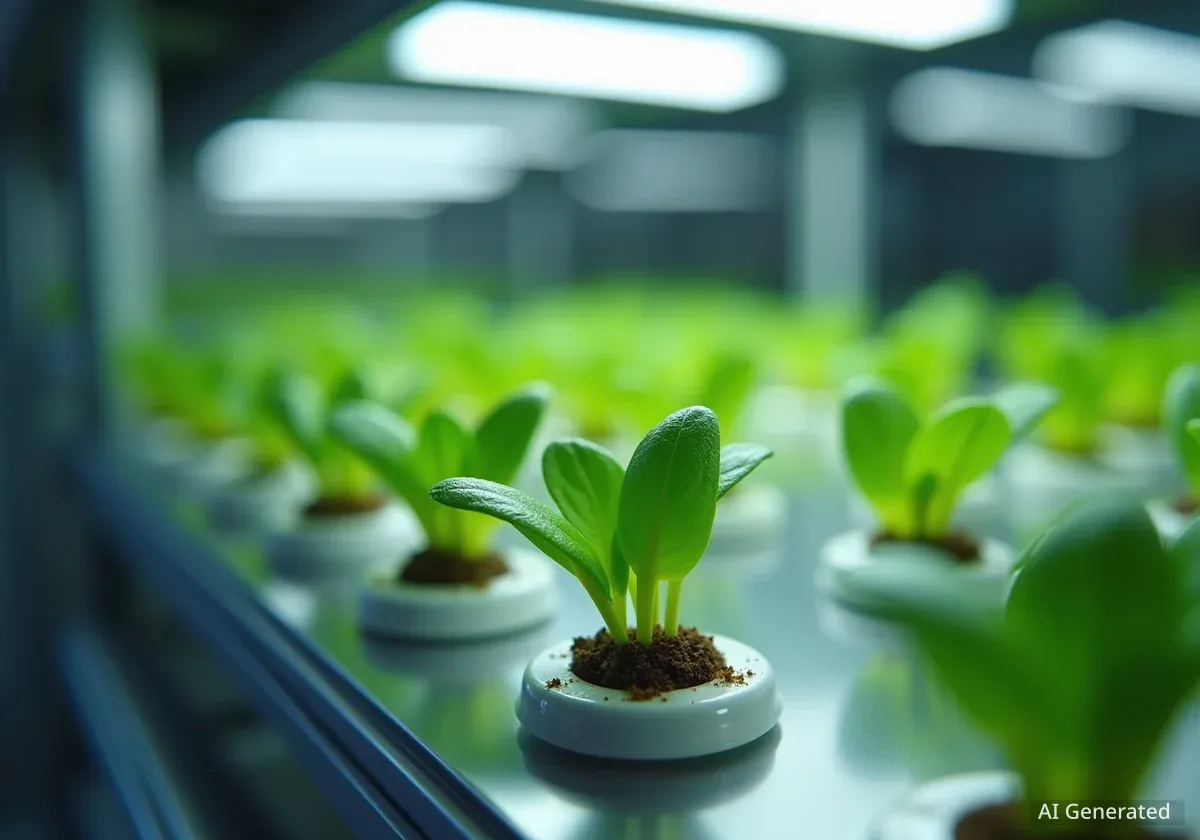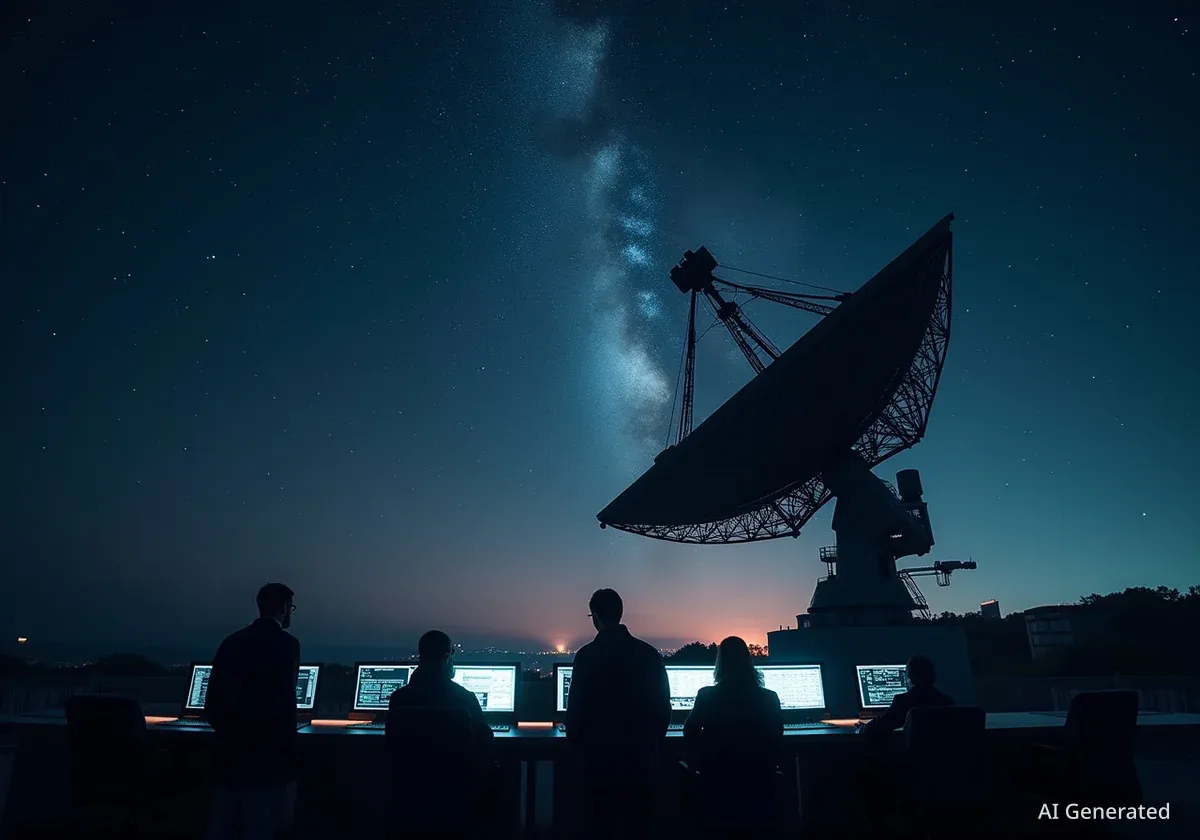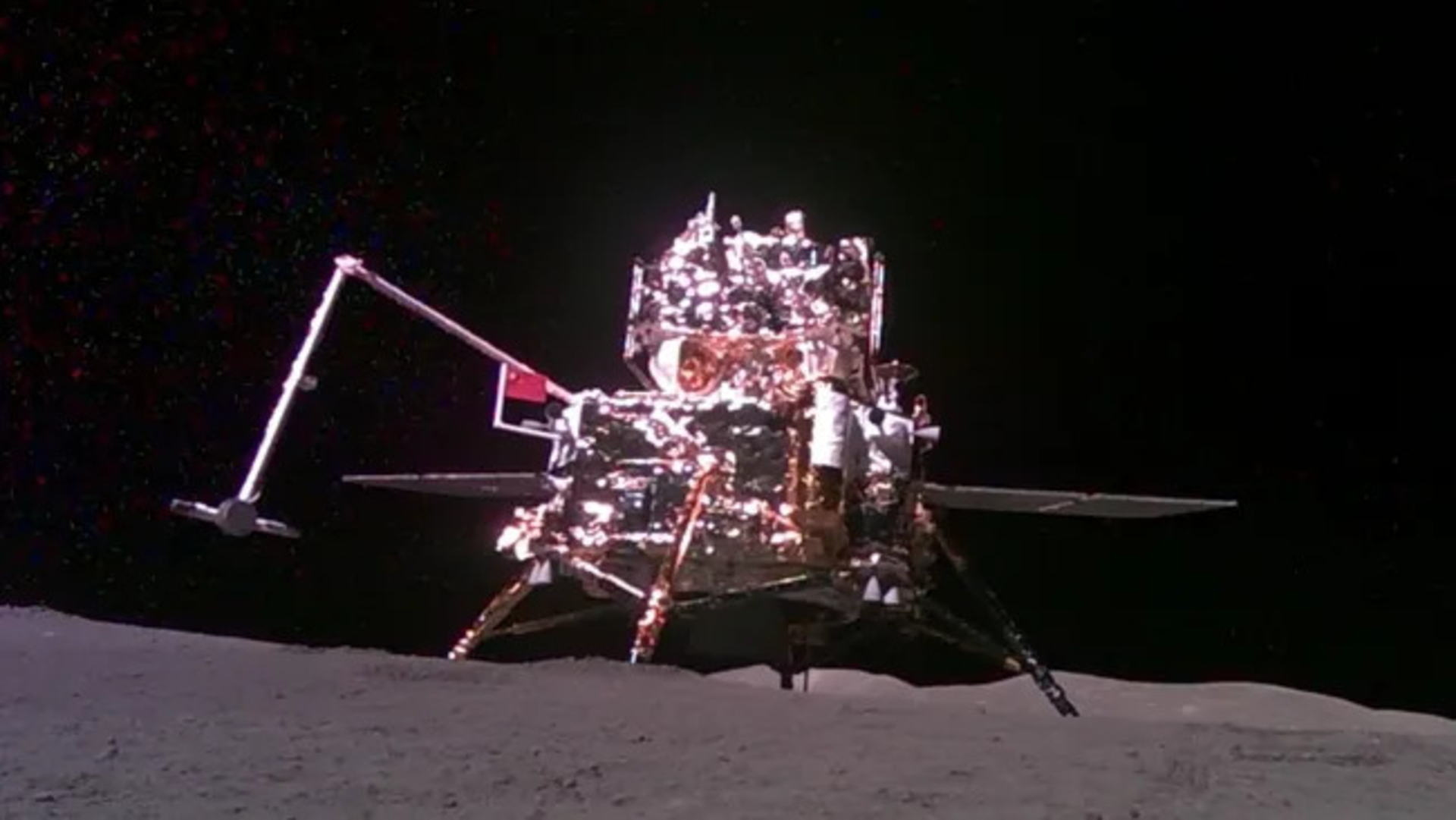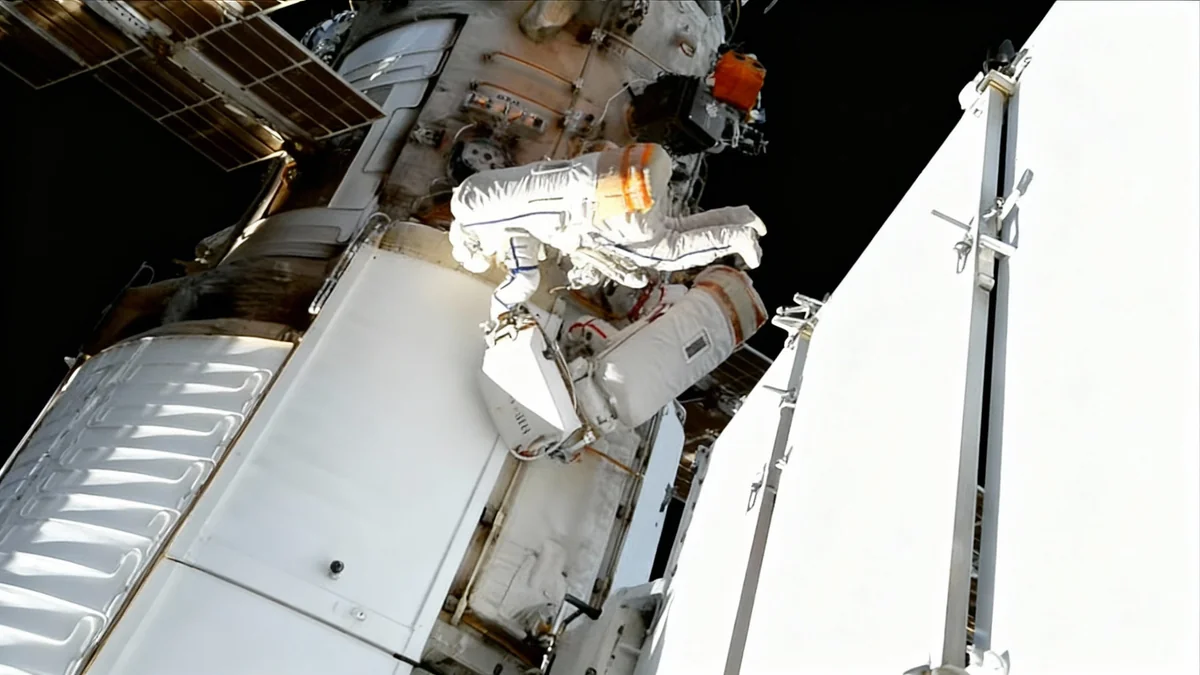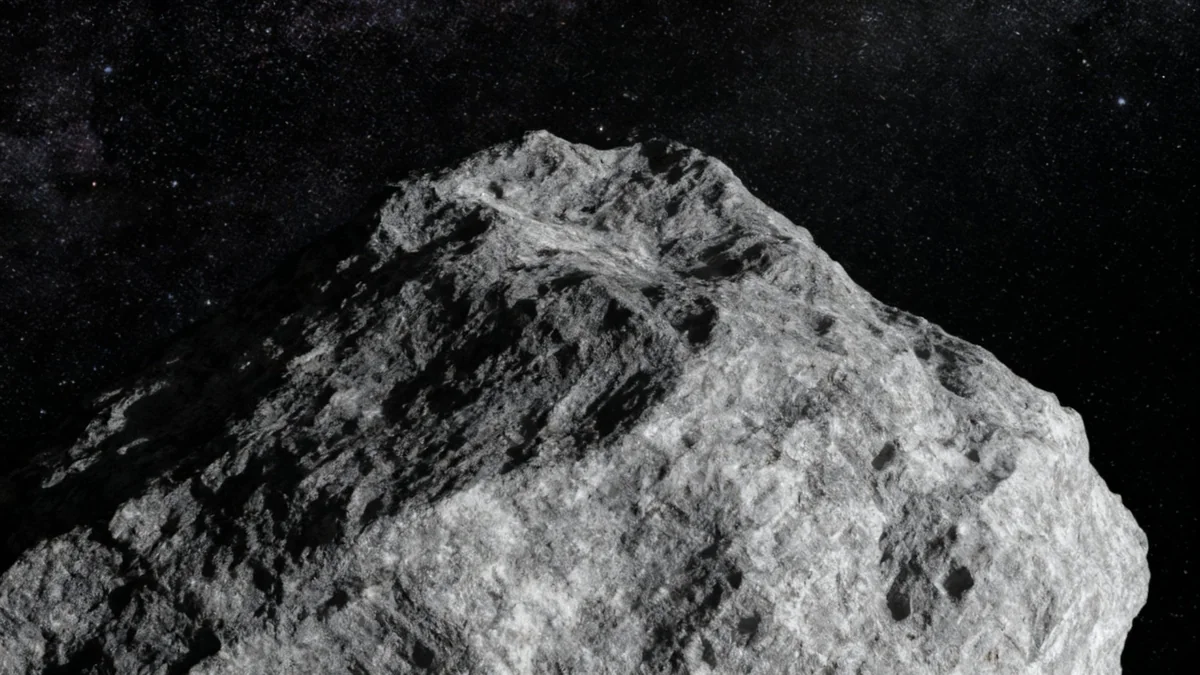Scientists are addressing two critical challenges for the future of space exploration: the growing problem of orbital debris and the biological requirements for sustaining human life off-planet. Experts argue that a new approach to space sustainability is needed, while parallel research into plant biology in microgravity is revealing key insights for long-term missions.
Key Takeaways
- Over 100 million pieces of space debris currently orbit Earth, posing a significant risk to active satellites and future missions.
- Experts advocate for a shift from simple sustainability to a restorative approach, actively cleaning up existing debris and designing reusable spacecraft.
- Research shows that plants and humans exhibit similar genetic responses to spaceflight, making plants a valuable model for understanding microgravity's effects on biology.
- Cultivating plants in space is considered essential for providing food and life support for long-duration missions to the Moon and Mars.
The Growing Challenge of Orbital Debris
The region of space surrounding Earth is becoming increasingly crowded. Decades of space activity have left a legacy of defunct satellites, spent rocket stages, and fragments from collisions, collectively known as space junk or orbital debris.
This debris poses a direct threat to operational spacecraft, including communication satellites, weather monitoring systems, and the International Space Station. A collision with even a small piece of debris can cause catastrophic damage due to the high orbital velocities involved.
Current Debris Management Strategies
Standard procedures for dealing with non-functional equipment in orbit are limited. The most common methods include:
- Deorbiting: Setting the object on a trajectory to burn up in Earth's atmosphere.
- Graveyard Orbits: Moving the object to a designated orbit where it is less likely to interfere with active satellites. This is common for satellites in geosynchronous orbit, approximately 35,785 kilometers above Earth.
Manual removal of debris from orbit is rare and technologically challenging, leaving the vast majority of existing junk unaddressed.
A Call for a Restorative Approach
Some experts believe current sustainability practices are not enough to solve the problem. Moriba Jah, a professor at the University of Texas at Austin and chief scientist at GaiaVerse, argues for a more proactive strategy.
“When people are talking about sustainability, many of them are just saying, ‘Hey, can we find ways to just not make things worse?’ That kind of comes with having to learn how to live in our own filthy bath water kind of thing. There's already a bunch of junk. Not making it worse is necessary, but it's insufficient, because what we need to do is we need to be restorative.”
Jah emphasizes a philosophical shift in how humanity views space. He suggests moving away from a mindset of domination and extraction toward one of stewardship, viewing space as a shared environment that must be respected and preserved.
The Scale of the Problem
According to official estimates, there are more than 100 million pieces of space junk orbiting our planet. These range in size from tiny flecks of paint to large, intact satellites, all traveling at thousands of miles per hour.
Economic Incentives for a Cleaner Orbit
Beyond the environmental and safety concerns, Jah points to a powerful economic driver for cleaning up space. He compares current satellite design to single-use plastics and advocates for a circular economy in orbit.
“When we shift and actually design satellites that are reusable and recyclable, that will be creating jobs,” Jah stated. He believes this transition will enable long-term profitability from space activities.
According to Jah, the financial potential of a circular space economy is virtually limitless. In contrast, he warns that continuing with the current model of disposable technology presents a significant risk to the future of the space industry.
Plants as a Key to Off-Planet Habitation
As humanity looks toward establishing a long-term presence on the Moon or Mars, the ability to grow plants will be fundamental. Plants can provide a renewable source of food, produce oxygen, and recycle waste, making them a cornerstone of future life support systems.
Research into how plants adapt to spaceflight is not only crucial for agriculture but is also providing unexpected insights into how the human body reacts to the same environment.
Shared Biological Responses to Spaceflight
Rob Ferl, a professor at the University of Florida and the Inaugural Director of its Space Institute, has dedicated his work to understanding plant molecular biology in space. His research has uncovered surprising parallels between plant and human responses to microgravity.
“Some of the very same gene categories that humans change in space, especially long-term in space on the space station, are also activated, changed and repressed in plants when they make the journey into space,” Ferl explained.
“So, when you ask the question ‘Are there correlations between what happened to me in my flight and what happened to plants on their flight?’ Yes, there are.”
This discovery positions plants as an important biological model. Studying them can help scientists better understand the fundamental ways living organisms adapt to the absence of gravity, which could lead to new strategies for protecting astronaut health.
Studying the Journey into Space
Ferl participated in a suborbital flight on Blue Origin’s New Shepard spacecraft to conduct experiments on himself and his plants. This research focused on the short-term biological reactions to the different phases of spaceflight, an area less studied than long-duration stays on the International Space Station.
The experiment confirmed that plants react distinctly to each stage of the journey. “We know that from roots, signals move up to the shoots and to the leaves during launch,” Ferl said. “Everything then settles down once they get into space, and it gets reactivated when they have to go through high G's and return to the earth.”
The Path to Sustainable Off-World Settlements
Before permanent human settlements can be established on other celestial bodies, much more research is needed. Ferl emphasizes the necessity of repeated experiments with a wide variety of organisms, including different types of plants and people.
“We need more of that kind of not exactly replication, but the same experiment done on different genotypes of people,” he noted, highlighting his own participation in the research. “Different people that are taller, shorter than me, people that eat different stuff than me. We need to know as much about biology making the trip as we can learn.”
These ongoing studies are slowly building the foundational knowledge required to support human life beyond Earth. According to Ferl, while progress is being made, science is just beginning to understand the complexities of adapting terrestrial life to space.

